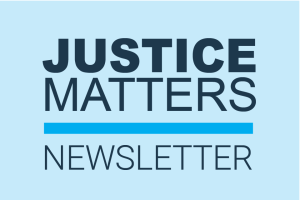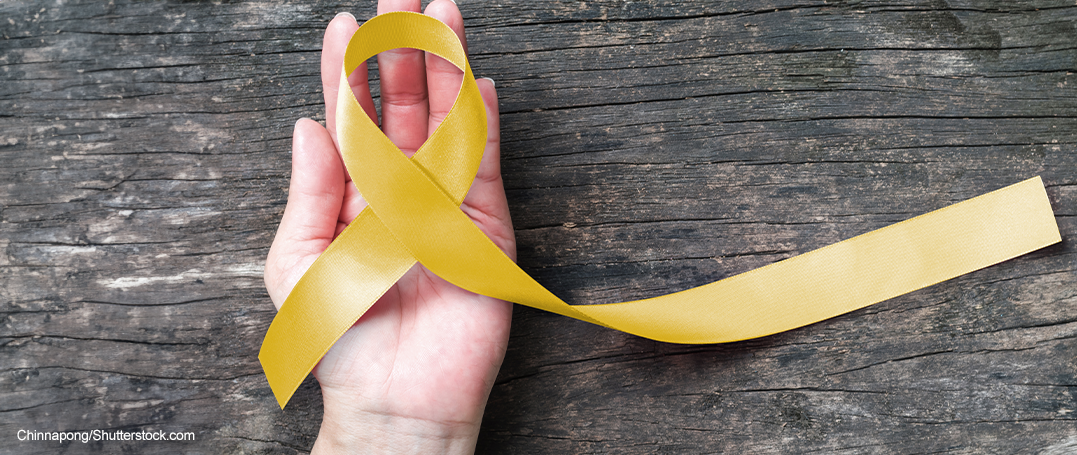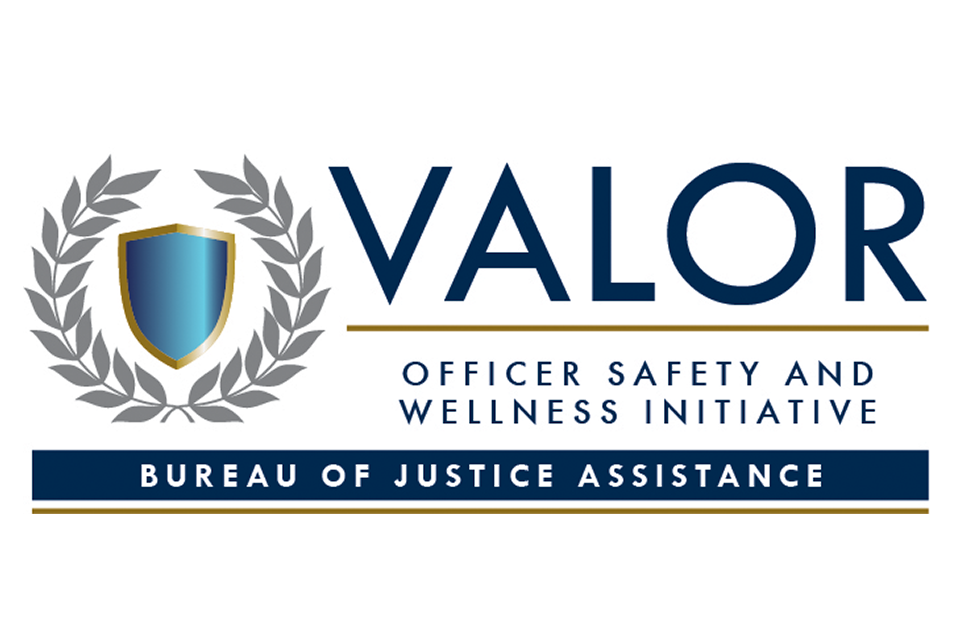Law enforcement officers encounter daily challenges in the field that take a significant toll on their mental health, resulting in extreme personal and professional crises that can escalate to suicide. However, deaths by suicide are preventable.
The Bureau of Justice Assistance (BJA) National Suicide Awareness for Law Enforcement Officers (SAFLEO) Program provides law enforcement agencies with practical training, technical assistance, and resources to promote officer mental health and well-being and prevent suicide.
The program helps leadership and line officers learn to identify warning signs of suicide and intervene with colleagues in crisis. SAFLEO also assists agencies in building a culture of officer wellness that supports retention by helping officers have healthy, satisfying careers.
SAFLEO is funded through BJA’s Officer Robert Wilson III Preventing Violence Against Law Enforcement Officers and Ensuring Officer Resilience and Survivability (VALOR) Initiative. All the training, technical assistance, and resources are provided by the Institute for Intergovernmental Research, BJA’s grantee for the SAFLEO Program.
Responding to an Urgent Need
A national rise in officer suicides since 2020 indicates that serious measures are needed to combat a disturbing trend. Suicide was the top cause of death for law enforcement officers in 2022, when 171 officers ended their lives. The San Antonio Police Department (SAPD) in San Antonio, Texas was just one of the law enforcement agencies affected.
“We had a stretch of about 18 months from early 2021 to late 2022 when we had six officers die by suicide,” says Karen Falks, SAPD Assistant Chief of Police. The crisis extends beyond active-duty officers. “In 2022, we had four active members and two retirees die by suicide.” It was a distressing number compared with the previous decade and a half, when four officers took their lives. “So that 18-month period was just a complete shock and an eye-opening experience,” noted Falks, a 34-year veteran with SAPD.
BJA reached out to SAPD after these recent losses, and “that’s how we became familiar with the SAFLEO Program,” says Falks. The program included training sessions for agency leadership and line officers on detecting suicide risk, encouraging healthy behaviors, and building viable wellness teams. When they showed what they had to offer through SAFLEO, “it was incredible,” Falks says. “We knew we needed to partner with them because of their compassion and experience.”
Removing the Stigma
One of the first parts of the training process is eliminating the stigma of officers “having issues” and the perception that coming forward for help is a sign of weakness. Maintaining a tough exterior because of fears of being ostracized, having your gun taken away, being laid off and jeopardizing your career, while also quietly suppressing painful experiences, used to be the norm, according to Falks.
SAFLEO is helping agencies move beyond this mindset to create a new culture of wellness where asking for help is encouraged. Leadership is on the front lines in combating the stigma. Falks recalls that in the first SAFLEO training class for command staff, the SAPD chief of police set a new direction for the department by assuring everyone that if they came forward for mental health assistance, they would not have to worry about any negative consequences. Hearing this directly confirmed by leadership “was just an incredible experience,” she says.
Credibility Is Key
Instructors are fellow officers who have “been there” and know what it means to feel suicidal due to job pressures or to lose colleagues to suicide. This gives their advice credibility, says Lieutenant Jeffrey Goodwin with the Las Vegas Metropolitan Police Department (LVMPD).
“I’ve taken wellness classes before, and a professional will stand up in front of me for two hours and talk, but he will not hit home because he hasn’t been part of the culture. He doesn’t understand what he’s talking about. It’s all academic to him. But the instructors with SAFLEO are phenomenal.” — Lieutenant Jeffrey Goodwin
Sergeant Trever Alsup is one example. Sergent Alsup joined the LVMPD in 1998, where he worked as a violent crime investigator and spent most of his time “working in misery and dealing with death and destruction,” he recalls. “I've seen just about every way it is possible for the human body to die.” Years of occupational stress and a series of traumatic events led to Sergeant Alsup’s decision to attempt suicide in 2022—an experience he frequently talks about in his role today as a SAFLEO instructor.
See the sidebar, "Return to Living," for Alsup's story.
Identifying Red Flags
Paying attention to changes in an officer’s behavior and directly engaging them in intentional conversations about what they’re experiencing can literally save a life, according to Alsup. Learning what to look for and how to respond is central to the instruction SAFLEO trainings provide.
Sometimes, crisis signs are subtle. An officer can be withdrawn and non-responsive, such as answering, “I’m okay” after returning from a call where a child has been murdered, when you know that they cannot be okay with what they’ve just seen, says Chief Vincent DeMaio with the Clinton Police Department in Connecticut. The SAFLEO training helps create a mindset of being present in the moment for that officer, which includes observing body language, he adds. For instance, DeMaio looks for signs such as if the officer is “staring at his shoes and not looking at you when he said he was okay.” Staying focused on the officer as a person in the moment and continuing to follow up with them after a trauma is a critical part of the training, he says.
In other situations, the crisis signs are obvious. Lieutenant Goodwin shared an incident when the SAFLEO instruction helped him directly. While off duty, Goodwin was called by the family of one of his officers and told that the officer was “making threats to kill himself, very intoxicated, very argumentative.”
“When we have an officer in crisis or in need, it’s our responsibility to respond,” Goodwin says. When he arrived at the house, Goodwin needed to determine if the officer was actually suicidal. Because of his SAFLEO training, he was able to get through to the officer and ask questions about how, where, and when he was going the kill himself. From this, Goodwin obtained the information necessary to legally transfer the officer to a hospital and get him the help he needed. “A lot of wellness classes don’t talk directly about suicide,” says Goodwin. Because the SAFLEO class was really “on point,” Goodwin had the tools he needed in a crisis.
Addressing Stress
Learning how to manage job stress is fundamental to surviving the daily trauma officers encounter and establishing long-term wellness.
“Whether you're a line officer or you’re chief of police, the stress just keeps coming. The analogy ‘always drinking from a fire hose’ is a good way to characterize the stress. You can't shut it off.” — Chief Vincent DeMaio
Ensuring you have some way to maintain “the inner you that keeps you going—keeps you sane, productive, healthy, and happy” is critical, says DeMaio.
Establishing a confidential process is the first step to build trust. When officers are assured of confidentiality, feel they have a safe space for sharing their concerns, and have confidence in the expertise available to respond to work-related stress, healing and wholeness are possible, says Sergeant Tina Baron, who leads SAPD’s wellness unit.
Baron attended SAFLEO training sessions in 2022 and found strategies she could immediately implement to build the new wellness unit’s crisis intervention capability. The unit now has a trauma response team that includes wellness officers and a chaplain who debrief officers after critical incident calls. “When there’s potential for officers to have a trauma response—meaning it’s going to be hard to forget what they’ve seen, hard to go home and be normal with their family, or hard to sleep—our team will meet with those officers on the same day to talk with them.”
Taking action to assess an officer’s resiliency immediately after an incident often includes determining if they are comfortable being at work in their current role and connecting them with the right psychological resources, according to Baron. “There’s no administrative requirement that they speak with us, but we’ve found that they want to decompress, and it makes them feel better.”
Investing in Retention
Keeping officers mentally healthy is key to positive work performance and retention. “We invest in our officers by caring about their well-being” says DeMaio. As a result, “whenever we have an opening, we have a bunch of people wanting lateral entry into the department.” He adds that his department has been fully staffed “when everyone around the state is constantly down people—almost 30 percent of their force at times.”
A general openness about sharing personal issues is more prevalent with the younger generation of officers. As a result, wellness programs are often well-received and may even be expected as an agency benefit by potential recruits.
A focus on officer mental health and well-being boosts retention and recruitment, says Alsup. “If we take wellness seriously, we're going to prevent burnout and we're going to prevent people from having their stress take them to a place that we don't want them to go.”
Taking Wellness Forward
Every law enforcement agency owes their officers a wellness program, says Falks.
“You owe it to your community, your organization, officers, and their families to have a wellness unit and to bring in SAFLEO to give you the direction you need.” — Assistant Chief Karen Falks
“Officers come to work and put their lives on the line, and they do it because they want to make the world a better place, which sounds like a cliché, but it’s the truth,” says Falks. “If you keep your officers’ mental and physical health good and take a holistic approach to wellness, you’re going to have a better officer.”
Continuing to reinforce wellness through SAFLEO and other VALOR Initiative programs is vital. “We’re moving in the right direction,” says DeMaio, “and we need to be constantly repeating the message for new audiences and retraining those who have heard the message so that it stays in the forefront.”
“SAFLEO saves lives,” says Goodwin. “Suicide is a hard topic to talk about. It’s not something we want to think about, but it is still one of the leading causes of death for law enforcement right now. Take the time to take the class. You need to be able to watch for the red flags in yourself, your friends, coworkers, officers that you work with. You put the badge on every day. You owe it to yourself to take this class.”
Resources:
- 988 Suicide & Crisis Lifeline: Call 988 | Text "BLUE" to 741741 | Start a chat
- For information on the SAPD officer wellness program, contact Assistant Chief Karen Falks or Sergeant Tina Baron




